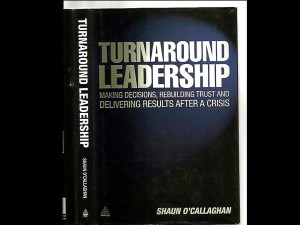Rebuild your business after a crisis

It’s good that the reassuring word “turnaround” is used, denoting not only a dramatic recovery, but a turning point where the organization rises from the ruins and “better than before.” (By the way, “turnaround” should not be mistaken for “turnabout.” The latter means a sudden change of heart or mind.)
Crisis management
Many books have devoted discussion on crisis management and crisis communication from the usual situations triggered by unwanted events – from isolated incidents to unmitigated disaster, from localized mishaps to major catastrophes.
Crisis could also be a bank run, a collapse of an insurance or a preneed company going bankrupt – and thus leaving customers at a loss how to get back their deposits or investments.
Author O’Callaghan points that “crises can come in many shapes and sizes: system-wide and sector-specific problems” which, in turn, can arise from a recession, technology changes rendering a business model obsolete, regulatory changes and shifts in customer spending habits. Examples, even in the Philippines, abound.
Company-specific problems
Also, company-specific problems may result from poor strategic choices, lack of financial discipline, failed implementation of an IT project, or self-inflicted damage to a brand. We add externally inflicted damage to a brand like Tylenol. Recently closed financing institutions would probably fall under financial discipline lack.
The author proceeds to prescribe “turnaround” strategies based on his definition of a crisis. To him, crisis is “a turning point when assumptions about the future change, and there is a real danger that the promises you have made will no longer be delivered.”
The scope of his definition is quite limited and thus may be arguable, and yet we grant that the author subsequently shows that the definition is workable viewed from the book’s purpose and prescriptions.
O’Callaghan cites the book’s purpose thus: “Enable leaders to identify the drivers of a potential crisis and so take action to avoid one; help executives rebuild their business after a crisis.”
Five programs
And to bring back a crisis-stricken company from its knees to its feet, in a manner of speaking, he cites five programs: Making the right promises, gathering multiple viewpoints, using core business skills, delivering results through relationships, and rebuilding trust with authentic communication.
He prefaced his programs on the inescapable reality that during and right after a crisis, “levels of uncertainty about the future are high,” and it becomes doubly difficult to manage the organization.
On making promises, he says: “Decide what promises to make to your stockholders that are balanced between the often conflicting demands of different stakeholders, and that can be kept.”
In other words, do not outdo yourselves by promising everything. Or, at the other extreme, do not under-promise and under-deliver. These are words from experienced salesmen.
On the second program, getting as many viewpoints as possible on modes of recovery, the author stresses the need for many perspectives. In simple terms, he means: “Do not repeat your own mistakes.”
In a very mild way, he adds that you should not bring in those people who precisely were responsible for the crisis. He echoes a standard crisis communication principle, which states that the executive who brought in the problem should not be part of the solution.
After crisis resources
The author consultant has obvious strengths in finance and restructuring of organizations. In chapters on core business skills, he stresses the need to deal with two scarce resources during and after crisis: time and cash.
He recommends achieving high “cash velocity, meaning, the speed with which you convert concepts and ideas into cash.”
Like many smart finance guys we know, the author has interesting names for turnaround strategies: (1) Cut back in order to grow, meaning dispose of assets, (2) Get fit, i.e., business is still in a good market, but is not competitive enough; (3) Hold your breath, meaning, reduce costs, improve cash flow, but don’t lose your customers in the process; and Dress the bride, that is you do this when you have decided to sell the business, and must “dress it up.” (To brides, I hope, by this. The author is speaking only about money, not things money cannot buy.)
The author has catchy pieces of advice. For example, he cautions against “salami slicing,” which is an arbitrary cut of everything by 10 percent.
Finally, the finance man shows his appreciation of the human factor. He counsels that the organization’s stakeholders must be driven by a sense of mission so that they can effectively lead and follow in a post-crisis reconstruction effort. He points out: “After a crisis, when uncertainty has increased, it can be exceptionally valuable to have an authentic purpose and context for people to rely on. A statement of mission can serve as guide to employees as they take action based on corporate purpose.”
The book may not be your standard crisis management book, and yet it brings you to rarely discussed topics on finance, pricing, marketing – and then bringing us up to loftier thoughts like embracing the corporate mission as our guide for action after a crisis.
It is written by a consultant, and it reads like one. This is cheaper than hiring one who charges you by the hour. dmv.communications@gmail.com